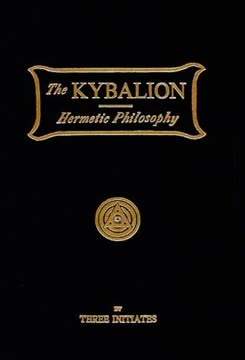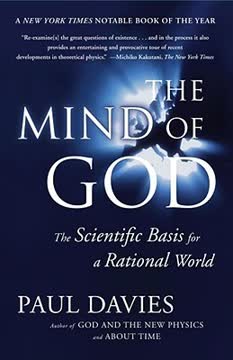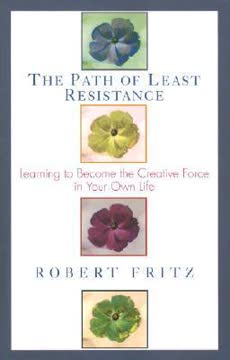Key Takeaways
1. A Secret History Reveals Mind Precedes Matter and Shapes Reality
This is a history of the world that has been taught down the ages in certain secret societies.
Beyond conventional history. This book presents a history preserved in secret societies like the Mystery schools, Knights Templar, and Rosicrucians, arguing that many historical figures were believers. Unlike conventional history focused on politics and economics, this account centers on the evolution of consciousness and the influence of spiritual beings.
Mind over matter. The core premise is that mind preceded matter, not the other way around. The universe began as a thought in the mind of God, emanating outwards in layers of increasing density. This perspective suggests a universe that is not indifferent but responsive to human consciousness and intention.
Hidden in plain sight. This secret philosophy has been guarded closely, sometimes through threats of death or social ostracism. However, it is also encoded in art, architecture, literature, myths, and even the names of the days of the week, often unrecognized by outsiders.
2. Early Ages Saw Spiritual Beings Guide Evolution and the Fall
In the beginning an impulse must have come from somewhere - but where?
Cosmic emanations. Creation began with emanations from the cosmic mind, initially subtle like mist, then denser. These emanations are understood as hierarchies of intelligent spiritual beings, including the gods of stars and planets (Elohim).
Battles of creation. Early history involved titanic struggles between these forces:
- Saturn (Satan), the principle of limitation and death, attacked the formless Mother Earth.
- The seven-fold Sun god (Elohim) arrived, pushing back Saturn and warming Earth, leading to the age of plant life (Adam).
- Venus (Lucifer), the light-bearer, introduced desire and animal life, causing the Fall and the formation of the spine/nervous system (the serpent entwined around the tree).
- The Moon god (Jehovah) emerged to counter Venus, introducing thought and moral law.
Echoes in time. These early epochs are remembered in the names of the first three days of the week: Saturn-day, Sun-day, and Moon-day. The transition from plant to animal life brought suffering, death, and the need for conscious choice.
3. Heroes Ushered in Thought, Language, and the Fixing of Forms
The Sphinx asks Oedipus a riddle: ‘What walks on four legs, then two legs, then three legs?’
Evolution of forms. Following the early ages, the cosmos saw the proliferation of animal forms, guided by planetary gods (Jupiter/Zeus). Early proto-humans were amphibian (Age of Aquarius), then land creatures (Age of Capricorn, Sagittarius), developing limbs and organs like the thorax (Mercury).
Dawn of intellect. This era saw the development of key human faculties:
- Orpheus invented numbers and music, measuring the Music of the Spheres.
- Enoch/Cadmus invented language, naming the heavenly hierarchies and preserving ancient wisdom in stone monuments (stone circles).
- Daedalus represented the beginnings of practical science and engineering.
- Job articulated the concept of life's unfairness, a product of newly possible abstract thought.
The Sphinx's riddle. The Sphinx, embodying the four cardinal constellations (Leo, Taurus, Scorpio, Aquarius), marks the point (around 11,451 BC) when matter solidified and biological forms became fixed. Its riddle about the ages of man also alludes to the evolution of human form and consciousness.
4. Ancient Civilizations Grappled with Matter and the Inner World
The Great Pyramid is a gigantic incarnation machine.
Post-Flood world. Following the Great Flood (around 9600-11,600 BC), remembered in myths like Atlantis and Noah, humanity began to rebuild. Dionysus/Noah taught agriculture and writing. Rama led migrations and fought monsters, embodying a new moral imagination.
Getting to grips with matter. Civilizations like Sumeria (Age of Taurus) and Egypt arose, characterized by massive engineering feats (ziggurats, pyramids). Unlike earlier ages where gods easily manifested, these cultures sought to draw spirits into the material world:
- Sumerians built ziggurats as 'god houses' and used statues as vessels.
- Egyptians practiced mummification to anchor the spirit for speedy reincarnation.
- The Great Pyramid (dated to 3500 BC in this history) was built to attract higher spiritual beings to incarnate.
Evolution of consciousness. This period saw a shift in consciousness. Sumerian texts suggest people experienced thoughts as external 'aural hallucinations' from gods (Jaynes's bicameral mind theory). Egyptian temple practices and the Cabala (Moses) focused on occult physiology and the power of numbers/language to influence matter and spirit.
5. Islam Rekindled Reason and Esoteric Wisdom in Europe
Allah is the Muslim name for Jehovah, great god of the moon and thought.
Moon god's impulse. Islam, founded by Mohammed (born 570 AD), represents a powerful impulse from the Moon god (Allah/Jehovah), emphasizing thought, moral law, and the suppression of animal passions. The Archangel Gabriel, associated with the moon, dictated the Koran.
Arabian Golden Age. Islamic civilization absorbed ancient wisdom (Aristotle, Zoroastrianism, Hinduism) and made great strides in science, mathematics, and astronomy. This intellectual ferment, combined with Sufi mysticism (Rumi, Ibn Arabi), created a bridge for esoteric knowledge to flow back into Europe.
Templars and the Grail. The Knights Templar (founded 1119) were deeply influenced by Islamic esoteric traditions, including Solomonic wisdom and Sufism. Their quest for the Grail is interpreted as a quest for a purified 'vegetable body' (soul) capable of carrying a higher spirit, achievable through esoteric techniques and moral development.
6. The Renaissance and Reformation Unleashed Inner Life and Occult Science
In the face of the Mona Lisa we see for the first time the deep joy of someone exploring her inner life.
Birth of the interior. The Renaissance (inspired by figures like Plethon, Ficino, Leonardo) saw the flowering of the individual inner life, a cosmos as vast as the outer one. This was seeded by Jesus Christ and nurtured by writers like Shakespeare and Cervantes. Romantic love, with its mystical yearnings, emerged from Islamic influence (Troubadors).
Occult art and science. Renaissance artists (Leonardo, Raphael, Botticelli) and thinkers (Bruno) were often initiates, using art to embody spiritual principles and attract divine influence. Alchemy, the science of transforming matter via the vegetable dimension, flourished, practiced by figures like Paracelsus and later, Newton and Bacon.
Rosicrucian impulse. The Rosicrucian Manifestoes (1614-1616) heralded a spiritual revolution, proposing a secret brotherhood with supernatural powers (healing, clairvoyance) and a mission to reform the world. Figures like Boehme and Dee embodied this impulse, seeking direct spiritual experience and applying systematic methods to both the spiritual and material realms.
7. Freemasonry Navigated Materialism, Revolution, and Deeper Laws
The great thing about science was that it worked.
Rise of materialism. The scientific revolution (Copernicus, Galileo, Kepler, Newton, Bacon) led to a mechanical world-view where physical objects became the primary reality. This shift, partly inspired by occultists applying systematic methods to nature, diminished the perceived reality of the spirit worlds.
Freemasonry's mission. Freemasonry emerged (officially 17th century) as a secret society aiming to guide humanity through this age of materialism. They fostered tolerance, freedom, and scientific inquiry, while preserving esoteric knowledge and practices (alchemy, ceremonial magic, astrology) in their lodges.
Deeper laws. While science revealed predictable physical laws, literature (novelists like Dickens, Dostoyevsky) explored the 'deeper laws' governing subjective experience and destiny – paradoxical patterns of cause and effect related to intention, fear, love, and moral choice, often invisible to objective analysis.
8. The Modern Age Faces a Spiritual Crisis and Prophecy of Return
Everyday I go into the grove,’ wrote the poet Nikolai Kliuev in a letter to a friend ‘and sit there by a little chapel and the age-old pine tree.
Spiritual darkening. The late 19th and early 20th centuries saw a spiritual crisis, a 'mystic death of humanity,' as the spirit worlds seemed to withdraw further. Literature (Dostoyevsky, Wagner) reflected this, exploring the demonic and the struggle for meaning.
Occult currents. Despite the dominance of materialism, esoteric traditions persisted:
- Swedenborg explored altered states and the structure of the spirit worlds.
- Blake and Romanticism drew on sex magic and cabalistic ideas.
- Russian mystics (Old Believers, Khlysty, Rasputin) maintained traditions of direct spiritual experience.
- Occultism influenced modern art, literature, and even political movements (Bolshevism).
Prophecy of return. Secret societies, particularly Freemasonry, anticipated a new age (Michaelic age, end of Kali Yuga) beginning around the late 19th century. This age would see the return of spiritual forces and a great battle against materialism. Monuments like obelisks were erected to invoke these forces.
The Work continues. The secret history suggests that humanity is undergoing a collective initiation, facing trials to develop consciousness and free will. The 'Work' of spiritual transformation continues, guided by ascended masters and encoded in the world around us, awaiting recognition.
Last updated:
FAQ
1. What is The Secret History of the World by Jonathan Black about?
- Alternative, esoteric history: The book presents a hidden, spiritual history of humanity, emphasizing the influence of secret societies, mystical traditions, and altered states of consciousness on civilization’s development.
- Mind-before-matter worldview: Jonathan Black challenges materialistic and scientific narratives, proposing that mind and consciousness precede matter, and that spiritual hierarchies shape reality.
- Decoding myths and symbols: The narrative interprets myths, religious texts, art, and monuments as encoded messages from ancient wisdom traditions, revealing a secret philosophy preserved through the ages.
- Role of initiates: The book highlights how initiates and secret societies have guided human evolution by transmitting esoteric knowledge and techniques for expanding consciousness.
2. Why should I read The Secret History of the World by Jonathan Black?
- Radically different perspective: The book offers a unique lens on history, spirituality, and consciousness, challenging mainstream materialism and encouraging readers to question accepted narratives.
- Comprehensive synthesis: It connects ancient wisdom, modern science, philosophy, and the occult, making it valuable for those interested in the deeper currents shaping human culture.
- Personal transformation: By exploring altered states and esoteric practices, the book inspires readers to engage with their own inner development and spiritual growth.
- Imaginative engagement: Jonathan Black invites readers to see the world through the eyes of initiates and mystics, making the reading experience intellectually stimulating and transformative.
3. What are the key takeaways and main themes of The Secret History of the World by Jonathan Black?
- Evolution of consciousness: The book traces humanity’s journey from collective, spirit-filled awareness to individual interiority and free will, shaped by spiritual hierarchies and initiatory practices.
- Secret societies’ influence: Groups like the Rosicrucians, Freemasons, and Knights Templar are portrayed as guardians of ancient wisdom, shaping politics, science, and culture.
- Mind-over-matter philosophy: The narrative asserts that consciousness is primary, and that reality is shaped by spiritual forces and human imagination, not just physical laws.
- Role of myths and symbols: Myths, religious stories, and symbols are decoded as vehicles for transmitting esoteric knowledge about cosmic evolution and human destiny.
4. How does Jonathan Black in The Secret History of the World explain the origins and evolution of human consciousness?
- Bi-cameral mind theory: Drawing on Julian Jaynes, the book suggests ancient humans experienced thoughts as external commands from gods, lacking introspection and individual will.
- Stages of consciousness: Human evolution is depicted as a progression from collective, dream-like awareness to the emergence of self-reflection, free will, and abstract thought.
- Influence of spiritual beings: The development of consciousness is guided by planetary gods and spiritual hierarchies, each stage marked by new faculties and challenges.
- Myth as evolutionary record: Myths and religious stories encode the stages of consciousness evolution, with figures like Adam, Gilgamesh, and Moses representing key turning points.
5. What is the “mind-before-matter” worldview in The Secret History of the World by Jonathan Black?
- Primacy of consciousness: The book posits that mind and consciousness are the fundamental reality, with matter emerging as a manifestation of cosmic mind.
- Emanations and Thought-Beings: Reality unfolds through hierarchical emanations from the cosmic mind, populated by intelligent spiritual beings influencing history and nature.
- Anthropocentric cosmos: The universe is designed to nurture human consciousness, with human will and imagination capable of shaping matter and destiny.
- Contrast with materialism: This worldview challenges the scientific belief that matter precedes mind, arguing for a universe imbued with purpose and meaning.
6. How does The Secret History of the World by Jonathan Black interpret ancient myths, religious texts, and symbols?
- Symbolic narratives: Myths and religious stories are seen as encoded teachings about cosmic evolution, spiritual hierarchies, and the development of consciousness.
- Astronomical and esoteric layers: Many biblical and ancient figures correspond to planetary gods and zodiacal archetypes, revealing hidden astronomical and spiritual meanings.
- Initiation and altered states: Myths often describe initiation rituals, death and rebirth symbolism, and spiritual journeys, reflecting the practices of Mystery schools.
- Decoding sacred texts: The book explores the Cabala, sacred numbers, and hidden codes in texts like Genesis, suggesting multiple layers of secret meaning.
7. What role do secret societies and Mystery schools play in The Secret History of the World by Jonathan Black?
- Guardians of ancient wisdom: Secret societies like the Rosicrucians, Freemasons, and Knights Templar are depicted as custodians of esoteric knowledge and initiatory practices.
- Transmission of teachings: These groups preserved and adapted ancient spiritual techniques, including meditation, ritual, and symbolic language, through changing historical contexts.
- Influence on history: Initiates within these societies—such as Newton, Kepler, Washington, and others—shaped major cultural, scientific, and political developments.
- Modern connections: The book traces the ongoing influence of these traditions in contemporary spirituality, politics, and culture.
8. How does The Secret History of the World by Jonathan Black describe initiation and altered states of consciousness?
- Techniques for transformation: Initiates used sensory deprivation, breathing exercises, sacred dance, sexual energy redirection, and hallucinogens to induce altered states.
- Death and rebirth symbolism: Initiation rituals involved symbolic death, spiritual journeys, and encounters with spiritual beings, preparing candidates for higher consciousness.
- Practical outcomes: These altered states inspired great art, scientific discoveries, and provided initiates with abilities like healing, mind-reading, and influencing matter.
- Imagination as a tool: The book emphasizes training the imagination as a means to access higher realities and participate in the cosmic creative process.
9. What is the significance of alchemy and esoteric science in The Secret History of the World by Jonathan Black?
- Alchemy as spiritual science: Alchemy is presented as a practice for transforming both consciousness and matter, working with the Four Elements and spiritual will.
- Historical alchemists: Figures like Paracelsus, Newton, and Bacon are shown as bridging occult wisdom and modern science, using both experiment and mystical insight.
- Symbolism and practice: Alchemical symbolism, sexual practices, and meditation are described as methods for achieving spiritual “gold” and opening the Third Eye.
- Integration with science: The book argues that early science was deeply intertwined with esoteric traditions, and that true knowledge requires both outer and inner exploration.
10. How does The Secret History of the World by Jonathan Black connect with modern science and critique materialism?
- Parallels with quantum physics: The book draws connections between ancient esoteric teachings and modern scientific ideas like quantum mechanics and the fine-tuning of the universe.
- Critique of materialism: Jonathan Black argues that scientific materialism ignores consciousness, intention, and meaning, which are central to human experience.
- Science as idealism: Early scientists are portrayed as open to spiritual and mental dimensions, not just physical observation.
- Call for integration: The narrative suggests that science and spirituality may eventually converge, offering a more complete understanding of reality.
11. What are the “deeper laws” and the concept of the “inner cosmos” in The Secret History of the World by Jonathan Black?
- Universal, paradoxical laws: The book describes deeper laws governing human experience and destiny, such as the idea that challenges repeat until overcome, or that belief can transform reality.
- Inner cosmos: Each individual is said to contain an inner world as complex as the outer universe, shaped by archetypes, spiritual beings, and personal narratives.
- Role of literature and myth: Great works of art and esoteric teachings help illuminate the inner cosmos and guide personal transformation.
- Practical implications: Understanding these laws and the inner world leads to spiritual awakening, personal growth, and alignment with cosmic evolution.
12. What predictions and future outlook does The Secret History of the World by Jonathan Black offer for humanity and consciousness?
- Cosmic plan and evolution: The book reveals a secret cosmic plan, predicting new spiritual impulses, the collapse of old civilizations, and the rise of new centers of spirituality.
- End of material cycle: It suggests that the current material phase of the universe will dissolve, ushering in a new spiritual era within several millennia.
- Role of initiation: Humanity’s future depends on awakening consciousness through initiation and overcoming both material and spiritual challenges.
- Ultimate transformation: The narrative foresees the return of great spiritual teachers, the overcoming of death, and the development of new powers of spiritual perception and creation.
Review Summary
The Secret History of the World receives mixed reviews. Some praise its thought-provoking ideas and extensive research, finding it a fascinating exploration of esoteric beliefs and alternative history. Others criticize it as pseudo-historical nonsense, lacking credible evidence and promoting unfounded conspiracy theories. Many readers appreciate the book's ambitious scope and unique perspective, while others find it confusing and poorly organized. The author's writing style and extensive references are both praised and criticized. Overall, the book appears to be divisive, appealing to those interested in alternative spirituality but frustrating skeptics and historians.
Similar Books
Download PDF
Download EPUB
.epub digital book format is ideal for reading ebooks on phones, tablets, and e-readers.








